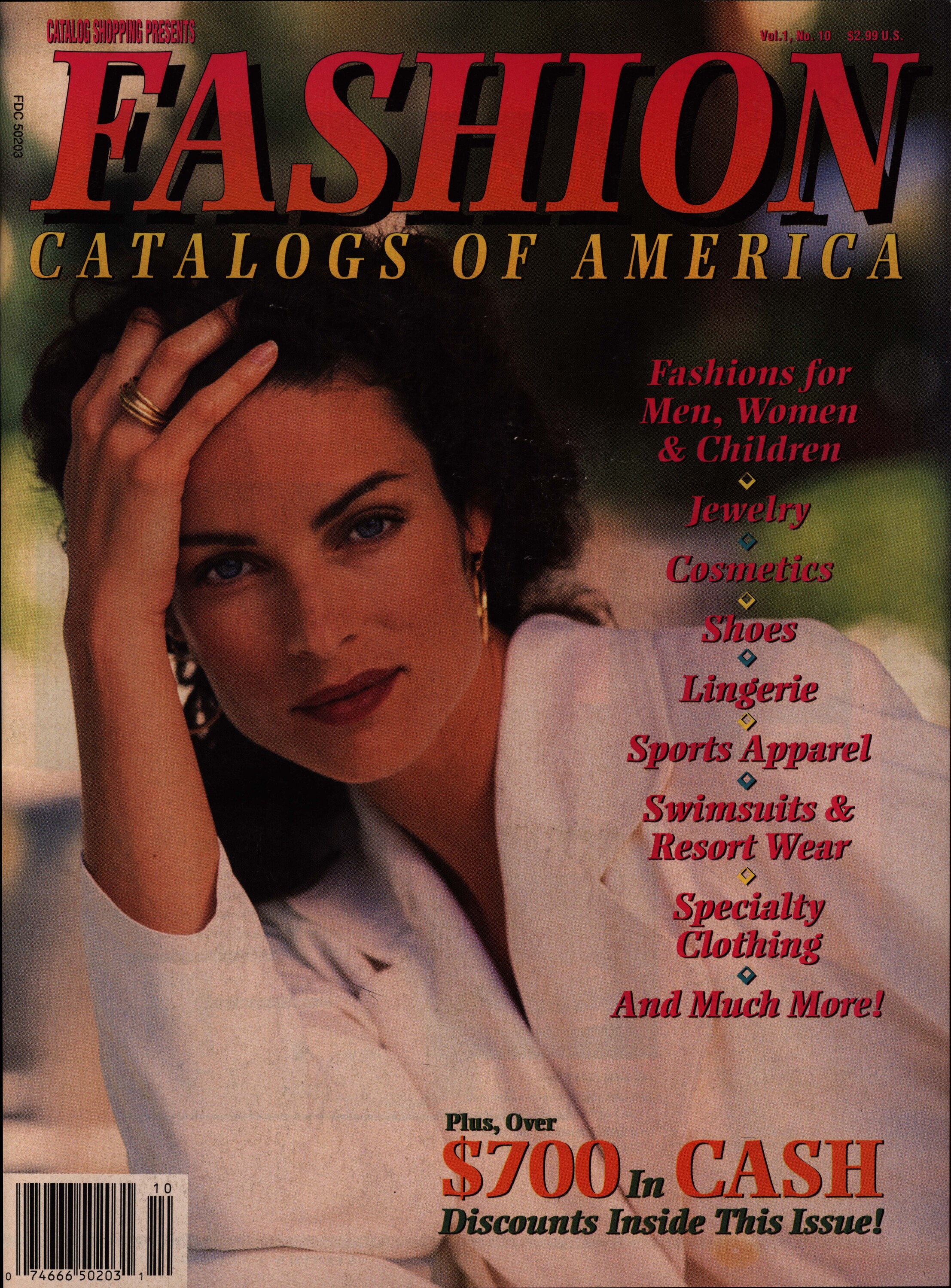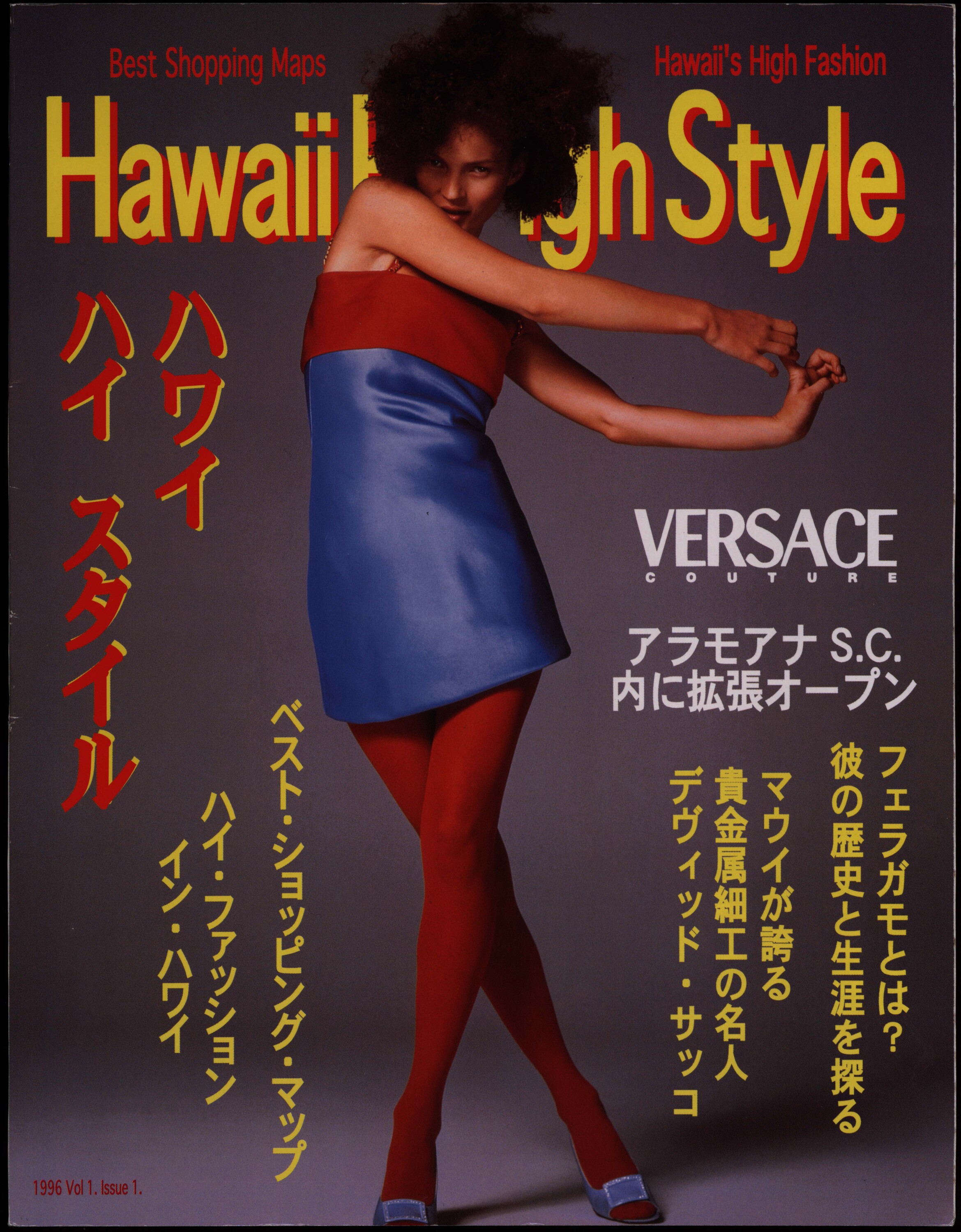Style Before Social Media: Fifteen Fashion and Beauty Magazines from 1985 - 2005
Fashion Catalogs & Shopping Guides
Within the realm of fashion and beauty magazines, there are catalogs and shopping guides. How are catalogs different from fashion magazines? While fashion magazines are more artistic sources of inspiration, catalogs are “straightforward” and “direct-mail advertising,” where the models “simply showed off the clothes.” The purpose of the catalog was for companies to sell their wares to the consumer from the comfort of home, wherever home may be. Before the Internet, the most common ways to make catalog purchases were by mailing or calling in an order.
One of the earliest catalogs was the Montgomery Ward single-sheet advertising 163 items in 1872, which rapidly expanded into a 540-page juggernaut with 20,000 listings a mere 20 years later. In close succession was the 1888 Sears, Roebuck & Co. catalog. Ready-made clothing items like men’s suits and hats, women’s skirts and blouses, bust forms and muslin underwear, and gloves and Oxford shoes were the most common clothing items sold via catalog. As more ready-made clothing and other luxury goods expanded, other companies saw the success of the Montgomery Ward and Sears catalogs and followed suit with their own glossy guides to fashion, notably Tiffany & Co.’s “Blue Book,” J.C. Penney, and Victoria’s Secret.
From 1986 to 1992, catalog sales increased 12 percent which exceeded the 5.3 percent average growth rate of the retail industry. This surge is attributed to several factors including toll free services, credit card acceptance, better shipping, and relaxed return policies. These contributing factors greatly benefited consumer groups with limited time, particularly professional women.
Shopping guides differ from fashion magazines and catalogs in that they provide intel on the shopping scene in specific locales. Hawaii High Style (discussed in detail below) offers guidance to future tourists on where to find the most-desired fashion hotspots in Hawaii.
Fashion Catalogs of America Vol. 1, No. 10 (1994)
Fashion Catalogs of America is a supplemental issue of Catalog Shopping in America, published by Larry Flynt, known for starting the adult magazine Hustler. Flynt acquired Catalog Shopping in America in an attempt to diversify his portfolio after his religious conversion to Christianity. Based on the information within the magazine, this is a directory or “catalog of catalogs.” Calling via telephone was a primary method of ordering products and this issue urges shoppers to dial the hot line and “select as many catalogs as you wish.” Fashion Catalogs of America advertised a variety of catalogs, each encoded with a three-digit identification number. When calling the hot line at a cost of “only $2.95 per minute,” the shopper could enter that three-digit code for the catalog of interest and receive ordering information such as the mailing address and toll-free phone number. After jotting down the list of contact information, the shopper could contact companies directly to request their catalog.
Hawaii High Style Vol. 1, Issue 1 (1996)
Hawaii High Style is a Japanese shopping guide for tourists interested in Hawaiian luxury fashion. Using Google Translate from Japanese to English, the magazine cover boasts that it is the best shopping map for high fashion in Hawaii. The guide’s goal is to help tourists have an exciting shopping experience in Hawaii while discovering their unique fashion style. This premier issue features Versace, Ferragamo, and David Sacco, all leaders in luxury fashion and jewelry with storefronts in Hawaii.
An important benefit of this shopping guide is helping shoppers spot counterfeit merchandise. One statistic Hawaii High Style shares is that in June 1996, the U.S. Customs Service inspected 20,000 suspected counterfeit luxury brand goods and seized a total of approximately 15,000 items, including more than 5,000 watches, women’s handbags, belts, scarves, and other accessories. Per the Google translation, the inner cover provides tips for being smart shoppers, including how to spot fakes:
- The price is ridiculously cheap.
- The product does not come with any original brand packaging, tags, or labels.
- Avoid products sold at street stalls like Market Brace and on the side of the road.
- Check the stitching to see if it was made by a craftsman.
“Be a smart shopper and enjoy your time in Hawaii ... Mahalo!” All of this advice is still poignant today, especially in the realm of online retail.

